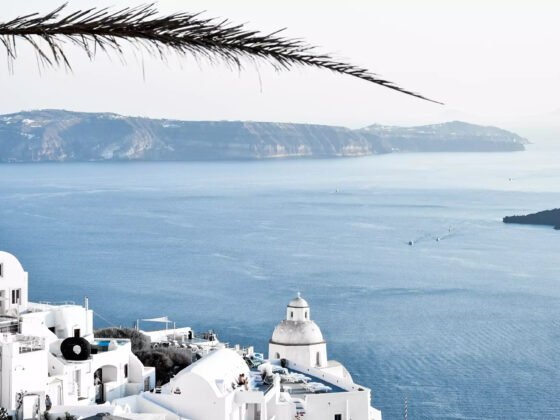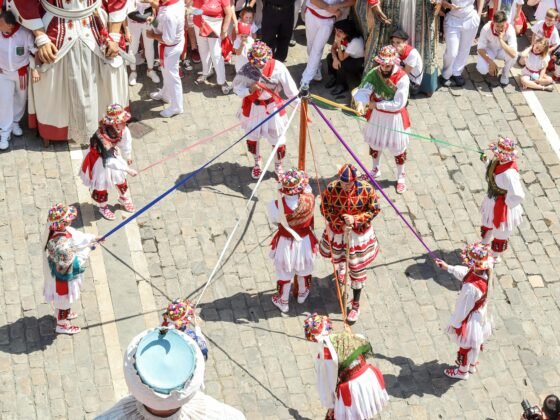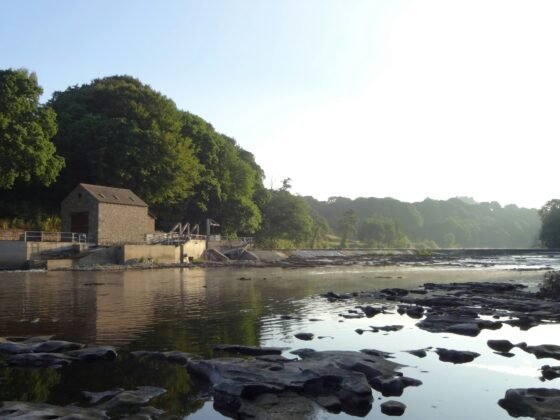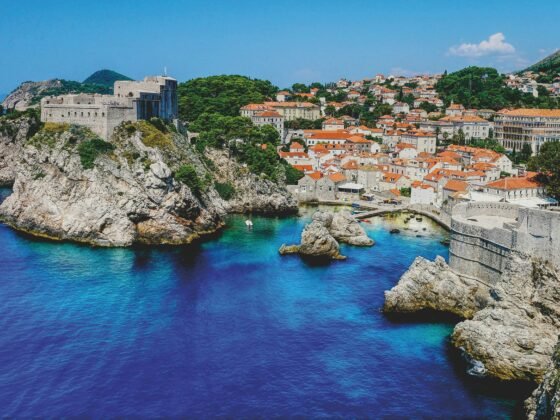The cosmopolitan city of Barcelona has exquisite architecture, superb galleries and a lively culture. The capital of Catalonia has unique Gaudi architecture, the colourful La Rambla boulevard and FC Barcelona football team who play at the huge Camp Nou. Barcelona brought us the 1992 Summer Olympic Games but unbelievably has never hosted the European Capital of Culture!
Take a stroll along La Rambla
Quite possibly the most famous street in Europe, La Rambla offers a snapshot of quirky and hip Spanish life in a single glance. The tree-lined pedestrian mall stretches for 1.2km into the Catalonian countryside. La Rambla throngs with travellers, dancers, buskers, artists and living statues. Grab a (slightly overpriced) coffee and people watch for a bit.
Admire Gaudi’s Iconic Gothic and Art Nouveau Architecture
The Spanish architect Antoni Gaudi has firmly stamped his mark on Barcelona. The city is awash with his lively and colourful creations, from the awe-inspiring Sagrada Familia church (detailed below), to the iconic Park Güell which is in the Modernisme style. Then of course there is the Casa Batlló, known locally as ‘House of Bones’, Casa Milà which is a UNESCO World heritage Site and is crafted from stone and iron, and the Palau Güell mansion (detailed below). In fact Gaudi was extremely prolific during his life before his death aged 73 in 1926. His works in the Orientalist, Neo-Gothic and Naturalist periods produced some of the finest art nouveau architecture in the world to date. And collectively the works of Antoni Gaudi have been UNESCO recognised World Heritage Properties since 1984.
Explore the stunning architecture of the Sagrada Familia
The iconic towers of the Sagrada Familia, aka the Church Of The Sacred Family, tower over Barcelona and are visible for miles around. Although construction has been in progress since 1882, famously the church complex is still not completed 130 years later! Typifying Gaudi’s Spanish Gothic style, the basilica has an estimated final completion date of the year 2026, which will combine nicely with the centennial of Gaudi’s death. Reaching a height of 558′ (170 m), visitors to the Sagrada Familia can buy a ticket explore the basilica, browse the special exhibitions and take part in the organised activities. There is also an on-site museum, nave and crypt to browse.
Discover Gaudi’s Palau Güell
The Guell Palace, aka Palau Güell is a stunningly ornate structure from the hand of Gaudi. Located in Barcelona’s Ciutat Vella district, the Palace was built as a residence for Eusebi Güell, an industrialist. Visitors can now explore the structure which was previously closed for many years for renovation. Highlights include the Central Hall and chapel and the Palau Güell is located just off La Rambla.
Attend a concert at the world-renowned Palau de la Música Catalana
The Palace of Catalan Music, aka Palau de la Música Catalana, is located in La Ribera district, and was built in 1905 by Catalonia’s ‘other’ famous art nouveau architect; Lluís Domènech i Montaner. The exquisite and ornate Palau de la Música Catalana with its steel frame is also a UNESCO World Heritage Site, along with Montaner ‘s other masterpiece, the Hospital de Sant Pau. Visitors can attend a performance at the palace in and join a tour that explores the Lluís Millet hall, Concert Hall and the Vestibule. Visitors can dine at the palace, take in a chamber choir performance and get involved with special projects.
Explore Barcelona’s Gothic Quarter
Going by several different names such as the Barri Gotic (Gothic Quarter), The Rambles, Ciutat Vella etc, this is basically the Old Quarter of Barcelona. This is the authentic beating heart of the city, bursting with museums, outstanding architecture and a fabulous selection of beaches when you reach culture overload! Highlights include the Plaça Sant Jaume Square which has seen many political demonstrations since the Roman period, the Barcelona Cathedral of Santa Eulàlia and the Catalonian Museum of History which details the struggles of the local people through the ages. Also in the Ciutat Vella district is the L’Aquarium, the family-friendly aquarium with sharks, penguins and fish in what is actually the second largest aquarium in Europe.
Learn a little Spanish history at the local Museums
Barcelona is bursting with interesting museums and learning a little of a countries’ history is a great way to really get a feel for a destination. Explore these museums of Spain by district;
- La Ribera – the highlight has be the Picasso Museum with many of Pablo Picasso’s early works.
- Barri Gòtic – the Museum of the City of Barcelona has impressive Roman ruins located underground with a good selection of exhibits.
- Raval – the Museum of Contemporary Art house interesting pieces in a modern glass-fronted building.
- Barceloneta – families will appreciate the Museum of Natural History which contains a living rainforest project.
- Eixample – the modernist quarter is home to the fabulous Chocolate Museum – warning; have lunch first!
- Sants-Montjuïc – the Catalan Archaeological Museum provides an interesting insight into the archaeological heritage of the Catalunia region.











